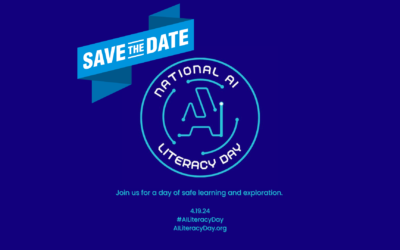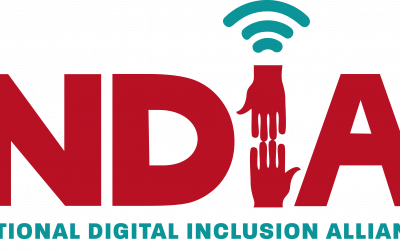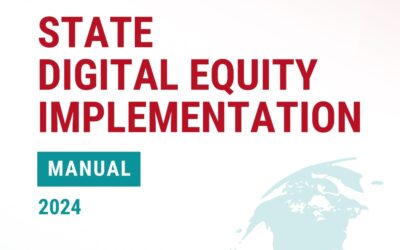DEFINITIONS
The Words Behind Our Work: The Source for Definitions of Digital Inclusion Terms
Since our start in 2015, NDIA knew we needed a way to connect digital equity advocates across the country. Our community craved a common language for the impactful work taking place on the ground, in our writing, and in our conversations. So we collaborated with you – our community – to build vocabulary around our movement.
These terms you’ve defined with us have been used in white papers, research, testimony, and policy. “Digital inclusion” and “digital equity” were even codified into law in the Infrastructure Investment and Jobs Act and the Digital Equity Act, passed in 2021.
As the landscape of our work continues to evolve, these definitions and the language we use will as well. It’s through continued discussion via channels like our listserv that we develop and grow these definitions. We invite you to join our community so you can take part in crafting future terms with our team!
National Digital Inclusion Alliance Definitions
We encourage you to use these definitions in your proposals, publications, and websites. Please credit National Digital Inclusion Alliance and link to this page as a resource.
Digital Divide
The digital divide is the gap between those who have affordable access, skills, and support to effectively engage online and those who do not. As technology constantly evolves, the digital divide prevents equal participation and opportunity in all parts of life, disproportionately affecting people of color, Indigenous peoples, households with low incomes, people with disabilities, people in rural areas, and older adults.
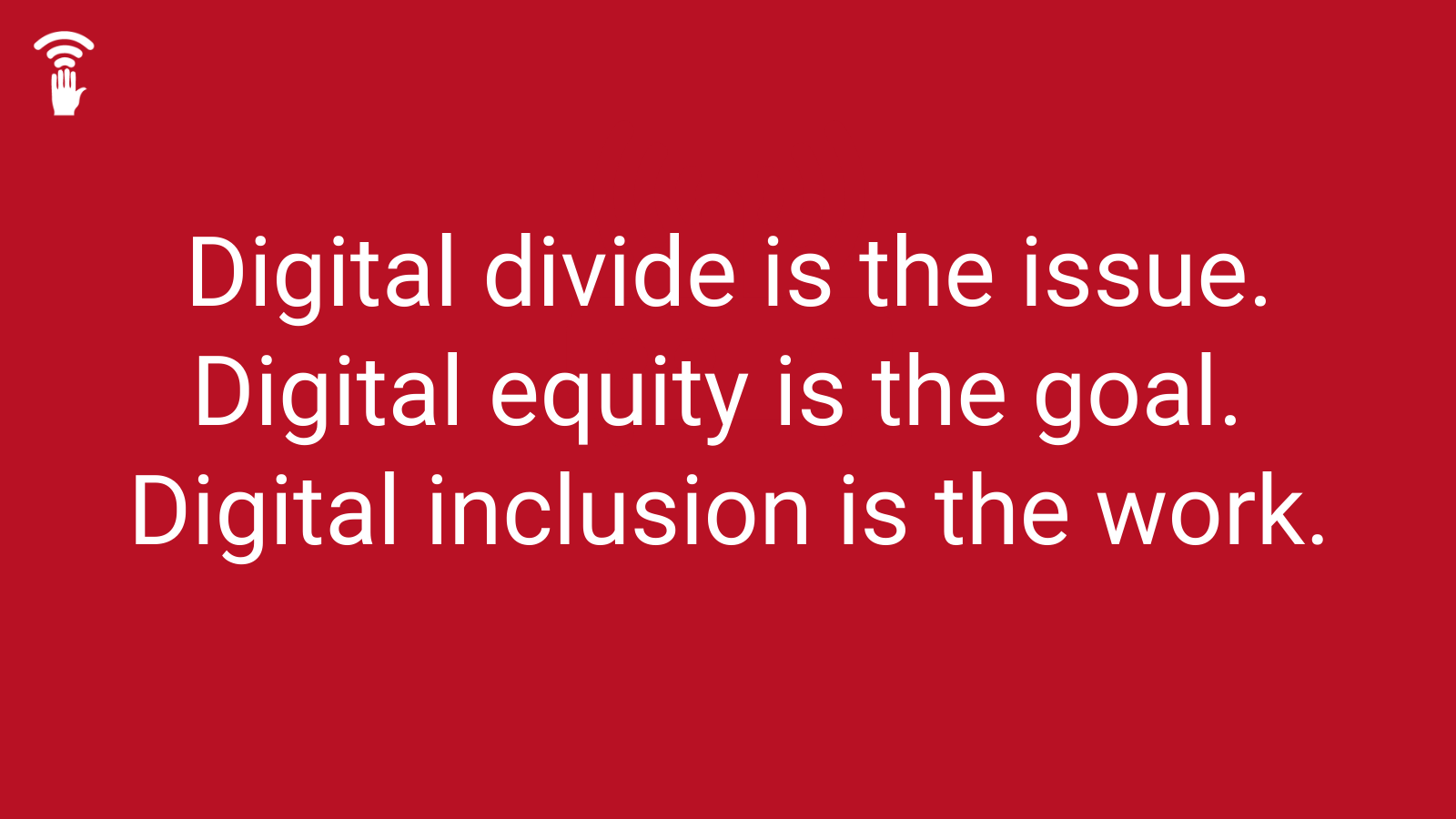
Digital Equity
Digital equity is a condition in which all individuals and communities have the information technology capacity needed for full participation in our society, democracy, and economy. Digital equity is necessary for civic and cultural participation, employment, lifelong learning, and access to essential services.
It is important to note here the use of “equity” vs. “equality.” When we use the word equity, we accurately acknowledge the systemic barriers that must be dismantled before achieving equality for all.
Digital Inclusion
Digital Inclusion refers to the activities necessary to ensure that all individuals and communities, including the most disadvantaged, have access to and use of Information and Communication Technologies (ICTs). This includes five elements:
1. Affordable, robust broadband internet service;
2. Internet-enabled devices that meet the needs of the user;
3. Access to digital literacy training;
4. Quality technical support; and
5. Applications and online content designed to enable and encourage self-sufficiency, participation and collaboration.
Digital Inclusion must evolve as technology advances. Digital Inclusion requires intentional strategies and investments to reduce and eliminate historical, institutional and structural barriers to access and use technology.
Digital Literacy
NDIA recommends the American Library Association’s definition of Digital Literacy via their Digital Literacy Task Force:
Digital Literacy is the ability to use information and communication technologies to find, evaluate, create, and communicate information, requiring both cognitive and technical skills.
A person with digital literacy skills:
- Possesses the variety of skills – technical and cognitive – required to find, understand, evaluate, create, and communicate digital information in a wide variety of formats;
- Is able to use diverse technologies appropriately and effectively to retrieve information, interpret results, and judge the quality of that information;
- Understands the relationship between technology, life-long learning, personal privacy, and stewardship of information;
- Uses these skills and the appropriate technology to communicate and collaborate with peers, colleagues, family, and on occasion, the general public; and
- Uses these skills to actively participate in civic society and contribute to a vibrant, informed, and engaged community.
Note: Using “Digital Literacy” or “Digital Skills” in Community Work
While the term “digital literacy” is used frequently in trade publications, research and policy, we recommend using terms like “digital skills” or “beginner computer training” while conducting community work. The word “literacy” and the implication of “illiteracy” can be perceived negatively by communities who need digital inclusion most. Using asset-based language reflects opportunity for growth and decolonizes language around education.
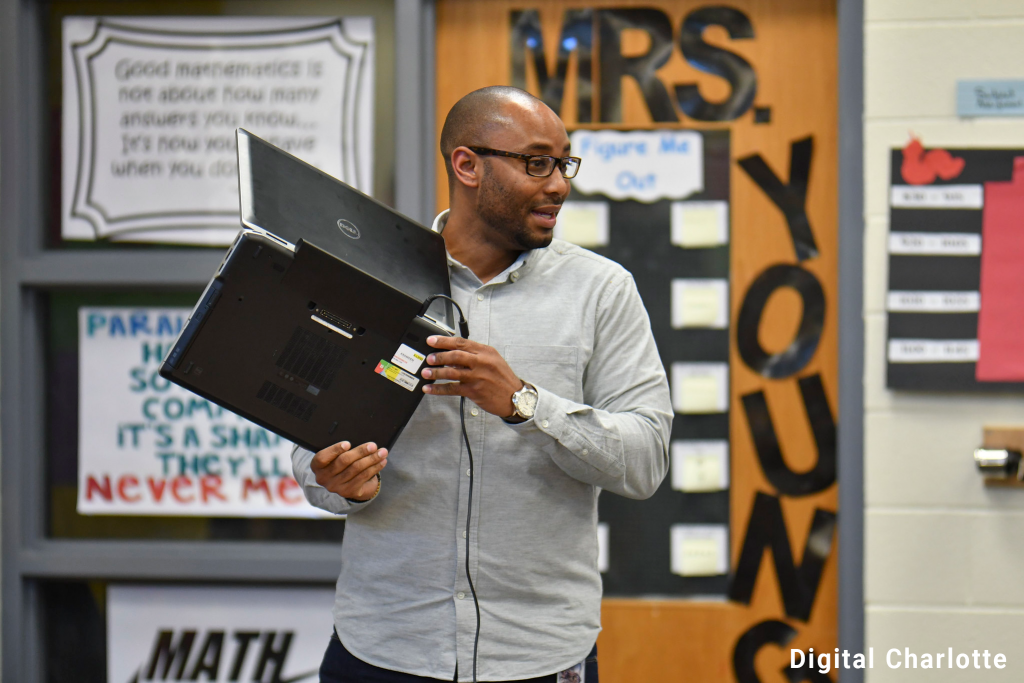
Broadband Adoption
Rhinesmith, Colin. “Digital Inclusion and Meaningful Broadband Adoption Initiatives.” Evanston, IL: Benton Foundation, January 2016. benton.org/broadband-inclusion-adoption-report
Broadband adoption has traditionally been defined as residential subscribership to high-speed Internet access. But for those in the field working to increase the digital capacity of communities, broadband adoption is daily access to the Internet:
- At speeds, quality and capacity necessary to accomplish common tasks,
- With the digital skills necessary to participate online, and
- On a personal device and secure, convenient network.
Digital Redlining
Digital redlining is discrimination by internet service providers in the deployment, maintenance, or upgrade of infrastructure or delivery of services. The denial of services has disparate impacts on people in certain areas of cities or regions, most frequently on the basis of income, race, and ethnicity.
Digital Navigators
Digital navigators are trusted guides who assist community members in internet adoption and the use of computing devices. Digital navigation services include ongoing assistance with affordable internet access, device acquisition, technical skills, and application support.
Interested in digital navigators? Watch our webinar!
Broadband Equity
Broadband equity is achieved when all people and communities are able to access and use affordable, high-speed, reliable internet that meets their long-term needs.
Digital Foundation Skills
NDIA recommends the definition from the “Digital Skills Framework,” updated in April 2019 by the Department for Education of the UK government.
Adults will need to have the following foundation skills which underpin all essential digital skills:
With Digital Foundation Skills, I can:
- Turn on a device
- Use the available controls on my device
- Make use of accessibility tools on my device to make it easier to use
- Interact with the home screen on my device
- Understand that the internet allows me to access information and content and that I can connect to it through Wi-Fi
- Connect my device to a safe and secure Wi-Fi network
- Connect to the internet and open a browser to find and use websites
- Understand that my passwords and personal information need to be kept safely as they have value to others
- Update and change my password when prompted to do so
Digital Inclusion Ecosystem
A Digital Inclusion Ecosystem is a combination of programs and policies that meet a geographic community’s unique and diverse needs. Coordinating entities work together in an ecosystem to address all aspects of the digital divide, including affordable broadband, devices, and skills.
Indicators of a strong Digital Inclusion Ecosystem:
- Existence of programs and policies addressing all aspects of the digital divide:
- Affordable and subsidized broadband service options that meet the community’s needs
- Affordable and subsidized device ownership programs that meet the community’s needs
- Multilingual digital literacy and digital skill trainings that meet the community’s needs
- Hardware and software technical support
- Digital navigation services to guide residents to the above services
- Collaboration: Entities providing local digital inclusion services, policymakers, advocates, social service providers and community leaders co-create solutions in partnership with the community.
Join NDIA’s monthly community call to collaborate with us.
Get the Latest Digital Inclusion News
April 19 is National AI Literacy Day
Join NDIA and partners around the country on April 19 to share and learn more about AI. National AI Literacy Day promotes safe learning and exploration with AI for all on this nationwide day of action. This is an excellent opportunity to learn about what AI is and how...
Broadband Speeds Get Long Overdue Boost
We’ve known for too long that the old broadband speed standards – 25 megabits per second (Mbps) download and three megabits per second upload – were not meeting the needs of increasingly connected households. Internet access is increasingly essential, and computer...
NDIA Releases State Digital Equity Implementation Manual
The good news just keeps getting better! Last week NTIA opened its State Digital Equity Grant Program NOFO, making available $811 Million for States, US Territories, and Native Entities (see our blog about that here).As you know, this is the first time in our...

